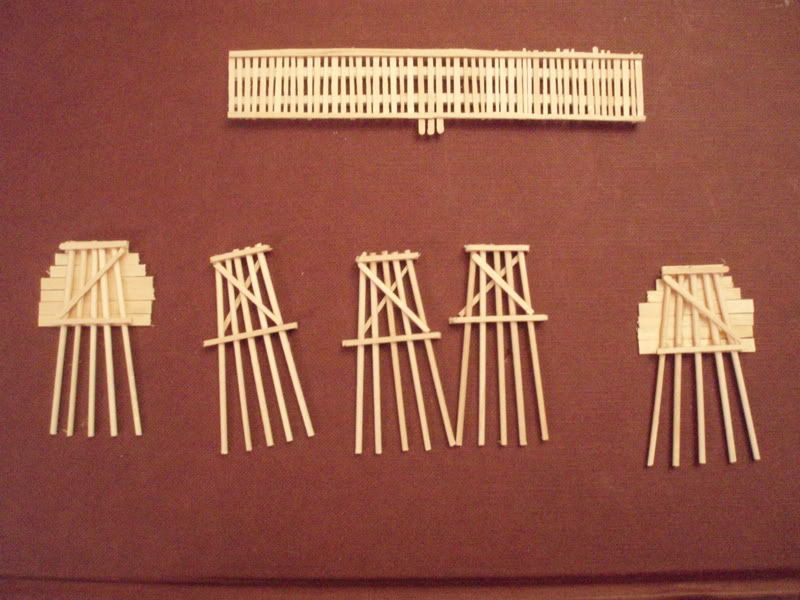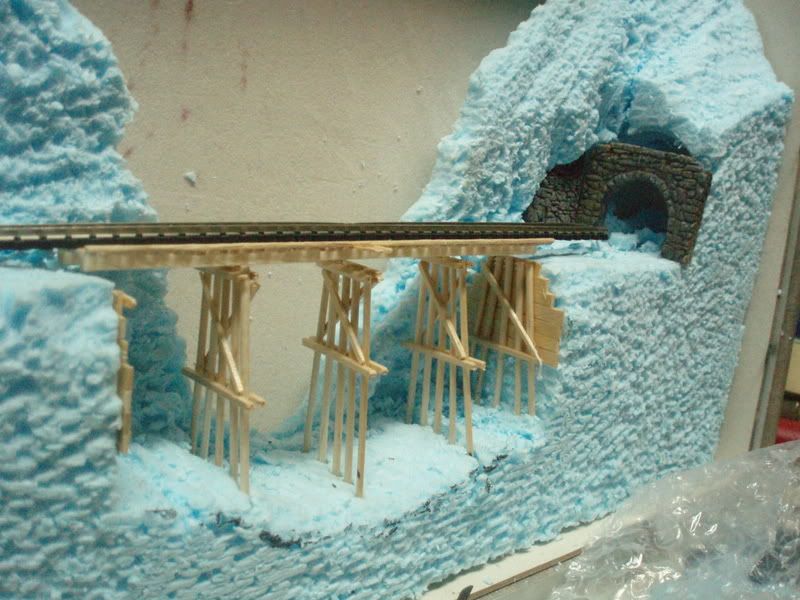I want to start doing some scratchbuiding. Where would I go and look for plans. Stunod
Pick your favorite railroad then do a search for their historical society
Most are a treasure trove of photos and plans
Mine of course is The C&O
Most of the RR mags have plans for structures from time to time – there are also books like Trackside Industries You Can Model that have plans. Your local hobby center will be an excellent resource as well. Check the internet – you may be surprised what you can find. The beauty of scratchbuilding is you are not limited to preformed pieces from a kit; take some photos of buildings in your area you want to model and then either scratchbuild from photos or sketch out a plan based on the photos.
Chuck
stunod,
I would encourage you to just pick something simple (e.g. a crossing shack), jump right in, and give 'er a try. Avoid choosing anything too complicated or intricate initially. Otherwise, you run the risk of getting frustrated and giving up before the project is completed.
It’s best to hone your skills and understanding on a simple project first before tackling anything that’s going to take you several days or weeks to complete.
Tom
Don’t be afraid tho… I did this in one night… granted it’s small scale, but the idea is the same…


One of the best sources of plans is the on-line data of the Historic American Building Survey (HABS): http://memory.loc.gov/ammem/collections/habs_haer/. This is a collection of photos and plans for all sorts of buildings started by the WPA. There are thousands of entries cataloged by type and state that span the period from the colonial era to the 1950s. The plans are not made to suit model railroad scales, but can easily be adapted to them.
Another good on-line site fordev eloping the skills needed foor scratch building is the Craftesman’s Corner on the Railroad Line Forum: http://www.railroad-line.com/forum. Some of the topics here also include simple plans.
Voyager
Older issues of Model Railroader are a great source for plans. Most public libraries have these in their collections. The Narrow Gauge and Shortline Gazette is another excellent source for plans.
Stunod
There is a wealth of information on all phases of MRR here also:
http://info.detnews.com/hotbox/index.cfm?action=categories&category=scratchbuilding
If you have a digital camera, you can also take pictures of the sides of a building you want to model and then use them to base your modeling from. If you measure one dimension on the structure, you can use the “resize” function on photo editing software to change the size of the picture to whatever scale you are modeling in (or very close to it).
In the “Railroad Line Forums” there are several threads of buildings that should be modeled with lots of pictures in them. That is an excellent reference for buildings.
Train Shed Cyclopedias were a series of books of plans from various prototype publications with lots of plans. They are out of print, but commonly found on E-Bay and used book sources.
Dave H.
Hi!
The previous posters gave some really good advice, and I would like to add to it…
The single most important tool (to me) in scratchbuilding is a scale rule. It is so easy to grossly under/over estimate the size of various components without one. Ha, I speak from experience, especially when it comes to scale lumber used for framing, rafters, support columns, etc., etc.
Also, start with a simple project - like a loading platform, shed, outhouse, or the like - and experiment using wood and plastic as your primary building material. Some folks strongly prefer one over the other, but the only way you can find what works best for you is to try each of them. Hey, no matter what…
ENJOY,
Mobilman44
Thanks very much for your info. I did not think about that
I recently stated in another thread that most of my recent scratchbuilding has been using wood so:
forest!
Agreed, and another extremely useful tool is a dial caliper. I have one that reads out in HO scale. It is very interesting and instructive to take a piece of wood or styrene that YOU think is the equivalent of an HO scale 2 x 4. Then measure it and see what size it really is!
Scale Rails, the NMRA magazine, features a small-ish, practical building drawing in nearly every issue.
When I was in 8th grade every boy had to take, in addition to wood and metal working and basic electricity, a class in mechanical drawing. Now I wish I’d paid more attendion, but some basic drawing skills using a T rule, graph paper secured to clean right angles, etc. is a useful start to a scratchbuilding project even if you have drawings.
In some ways you have to do a project or two to develop the skill (which I am still working on [D)] ) to reason backwards to the steps you should have taken. For example deciding whether the walls overlap the ends, or the ends overlap the walls; matching the roof angle on the sides, deciding what window treatments are called for before sealing off a first floor or roof; evaluating whether the windows are such that you can see through a structure in an unrealistic way; what kind of base the building would have; how to replace bulbs that burn out if the structure is to be lighted, and so on.
Dave Nelson